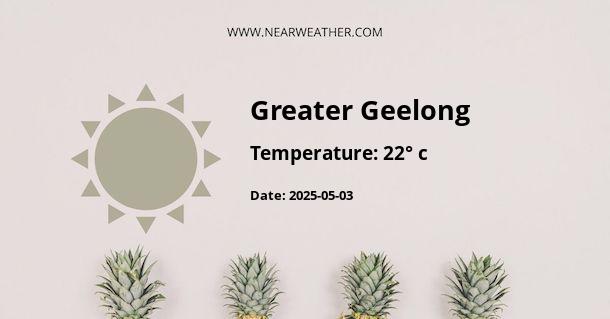Climate and Weather in Greater Geelong, Australia
Greater Geelong is a region located in the state of Victoria, Australia. It is known for its diverse climate, offering a range of weather conditions throughout the year. Understanding the climate patterns and weather variations in Greater Geelong is essential for residents, tourists, and businesses operating in the area. In this comprehensive guide, we will explore the climate and weather in Greater Geelong, providing valuable insights into the temperature variations, rainfall patterns, and seasonal changes that characterize this region.
Temperature
Greater Geelong experiences a temperate climate, with distinct four seasons: summer, autumn, winter, and spring. The temperatures in this region vary significantly across these seasons.
During summer, which spans from December to February, Greater Geelong experiences warm and occasionally hot temperatures. The average high temperatures during this time range from 25°C to 30°C, with occasional peaks reaching above 40°C during heatwaves. The evenings are generally mild and pleasant, with average low temperatures between 12°C and 15°C.
As autumn sets in from March to May, the temperatures begin to cool down gradually. High temperatures during this season range from 18°C to 25°C, while low temperatures range from 8°C to 12°C. Autumn in Greater Geelong is characterized by mild and comfortable weather, making it an ideal time to explore the region.
Winter, which occurs from June to August, brings cool and occasionally cold temperatures to Greater Geelong. The average high temperatures range from 13°C to 16°C, with lows between 5°C and 8°C. While winter in Greater Geelong can be chilly, it rarely experiences extreme cold, providing a relatively mild winter climate compared to other parts of Australia.
Spring, spanning from September to November, marks the transition to warmer weather. High temperatures range from 17°C to 23°C, with lows between 7°C and 11°C. This season witnesses the blooming of flowers and the rejuvenation of nature, making it a delightful time to visit Greater Geelong.
Rainfall
Greater Geelong experiences moderate rainfall throughout the year, with precipitation spread fairly evenly across the seasons. The region's rainfall patterns contribute to its lush green landscapes and vibrant vegetation.
Summer is the driest season in Greater Geelong, with average monthly rainfall ranging from 40mm to 50mm. The dry and warm weather during this time creates pleasant outdoor conditions for various recreational activities.
Autumn brings slightly higher rainfall, with average monthly precipitation ranging from 50mm to 60mm. The gentle transition from summer to autumn allows for the gradual replenishment of water resources and sustains the region's natural beauty.
Winter sees an increase in rainfall, with average monthly precipitation ranging from 60mm to 70mm. The cooler temperatures and occasional rainfall contribute to the overall replenishment of water sources and the maintenance of the region's ecological balance.
Spring experiences similar rainfall levels to autumn, with average monthly precipitation ranging from 50mm to 60mm. The combination of increasing temperatures and moderate rainfall creates optimal conditions for the regrowth of vegetation and the flourishing of flora and fauna.
Extreme Weather Events
While Greater Geelong generally enjoys a mild and temperate climate, it is important to be mindful of potential extreme weather events that can impact the region. The area can experience occasional heatwaves during summer, with high temperatures posing health risks and increasing the demand for cooling resources. Additionally, the region may encounter strong wind events, especially during transitional seasons, which can affect outdoor activities and local infrastructure.
It is essential for residents and visitors to stay informed about weather forecasts and any potential extreme weather warnings issued by local authorities to ensure preparedness and safety during such events.
Conclusion
Greater Geelong offers a diverse climate that adds to the region's appeal, providing a balance of warm summers, mild autumns, cool winters, and vibrant springs. The moderate rainfall throughout the year sustains the natural beauty of the area and supports various outdoor recreational activities. Understanding the climate and weather patterns in Greater Geelong is crucial for making informed decisions about travel, outdoor adventures, and everyday activities in this captivating region.
A - Greater Geelong's Latitude is -38.051819 & Longitude is 144.461365.
A - Weather in Greater Geelong is 10° today.
A - Climate Conditions in Greater Geelong shows broken clouds today.
A - Humidity in Greater Geelong is 88% today.
A - Wind speed in Greater Geelong is 24.08 km/h, flowing at 290° wind direction. today.
